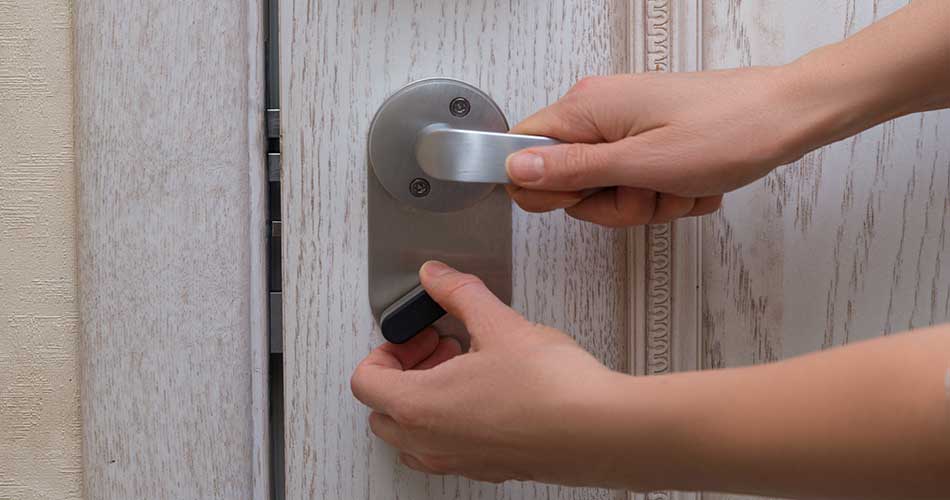By William Deutsch
A deadbolt is a physical security standard for protecting exterior doors. When selecting a deadbolt to protect your business, there are several factors that you should consider.
ANSI Grade 1
ANSI stands for American National Standards Institute. They are a non-profit group that oversees the development of standards for a variety of industries. In order for a deadbolt to be considered commercial grade, it must meet the ANSI Grade 1 specification. This means that the deadbolt
• Has been tested to 250,000 open/close cycles
• Has a bolt that projects 1 inch into the door frame
• Can withstand 10 hammer blows without giving way?
Double or Single Cylinder?
Deadbolts come in both double and single cylinder models. A double cylinder deadbolt requires a key to operate the deadbolt from either side of the door. A single cylinder deadbolt can be locked or unlocked from inside by a thumb turn.
Conventional security wisdom has dictated that double cylinder deadbolts be used on doors with windows. This eliminates the danger of someone breaking the glass and reaching inside to unlock your door. However, there are a few reasons to re-think this approach and use a single cylinder deadbolt in most applications.
The first reason is a concern for life safety. A double cylinder deadbolt may prevent you from exiting quickly in case of emergency. You don’t want to be fumbling for a key when your building is burning. Some manufacturers do make a “captive thumb turn” key – basically, a removable thumb turn that transforms the lock from a single to a double cylinder. But the fact that the thumb-turn can be removed means that it may not be handy when you need it.
The second reason to reconsider this policy is the strength of modern windows. Back when single-pane glass was the norm, the single cylinder deadbolt was a bigger risk. The glass on most newer doors is nowhere near as flimsy.
Our recommendation is that you use a single cylinder, Grade 1 Deadbolts on all your exterior doors. If possible, use solid doors with no glass.
UL 437
Underwriters Laboratories is another well-known organization that tests products and writes standards. UL 437 is the standard for high-security locks accepted across the security industry. In order to pass the UL 437 test, locks must resist a variety of attacks including drilling, picking, prying, etc.
Proper Installation
The “strike” is the metal plate the attaches to your door jamb and receives the bolt. This should be installed using 3-inch screws. Using long screws secures the strike to the door frame, not just the jamb. In addition, your lock should also have a reinforced strike plate with offset screw holes. The off-set holes ensure that the screws aren’t driven into the same grain of the wood. When someone is trying to kick in your door, the jamb will normally give way before the deadbolt; but the extra long screws and reinforced plates will stand up to some serious pounding.
Key Control
All of this physical security is powerless to stop someone with a key. This is why you also need to pay close attention to your key control policy.
Locksmith or DIY?
If you’re the do-it-yourself type, and you only have a few doors to protect, the information in this article should help you to make a wise choice regardless of whether you purchase your locks from a locksmith or a big-box store. If, however, you require a master key system or patented key control it would behoove you to spend the extra money and use the services of a professional locksmith.

